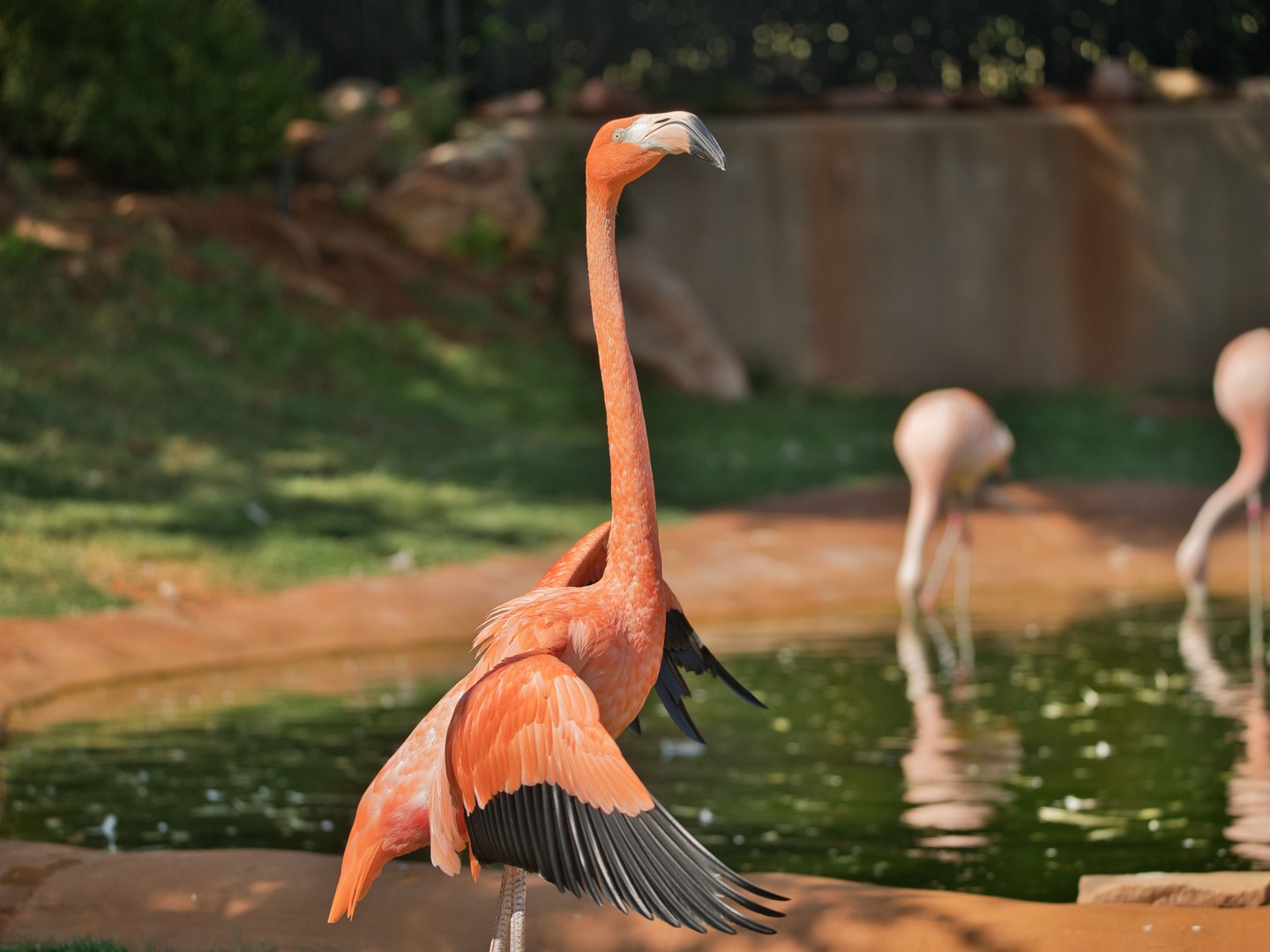- Exploration of flamingo physiology and distinctive behaviors
- Examination of the flamingo’s diet and its impact on their coloration
- Insights into the lifespan and longevity of flamingos in the wild and captivity
- Discussion on flamingo conservation status and habitat challenges
- Promotion and significance of Bird Awareness Day on May 3rd
Flamingos are captivating creatures that transcend their vibrant appearance, offering a wealth of intriguing ecological roles and behaviors. Known for their striking pink coloration, flamingos possess unique physiological traits that have significant survival advantages. One such trait is their iconic one-legged stance, which they utilize to preserve body warmth. This peculiar behavior allows them to conserve energy and maintain thermal balance, particularly when submerged in cooler waters.
The flamingo’s diet plays a crucial role in their distinctive color. Their pink hue originates from carotenoids, pigments found in the algae and shrimp that constitute a significant portion of their diet. When these carotenoids are broken down metabolically, they are deposited in the bird’s skin and feathers, giving them their signature rosy tint. This process highlights the intimate connection between environment, diet, and animal physiology, providing a fascinating example of how dietary elements directly influence an animal’s appearance.
Flamingos can live impressively long lives, spanning up to 30 years in their natural habitats. Remarkably, some flamingos in captivity can exceed this lifespan, with certain individuals surpassing 50 years. This longevity is testament to the careful husbandry practices in zoos, which focus on appropriate nutrition, social structures, and veterinary care. Such environments aim to replicate the flamingos’ natural settings as closely as possible, offering enrichment that stimulates natural behaviors and promotes physical health.
Conservation efforts are imperative for flamingo populations, as habitat destruction and environmental changes pose substantial threats to their survival. Wetland drainage, pollution, and human encroachment disrupt the ecosystems these birds depend on. Conservation programs prioritize habitat protection and restoration, working to safeguard the diverse environments that support flamingo populations. Public awareness and education are also vital, encouraging community involvement in conservation initiatives.
May 3rd marks Bird Awareness Day, a perfect opportunity to celebrate the diversity and wonder of avian species like flamingos. This day is dedicated to recognizing the importance of birds in ecosystems and promoting conservation efforts worldwide. With events and activities designed to engage the public, Bird Awareness Day fosters appreciation for our feathered friends and highlights the importance of preserving their natural habitats.
By understanding and celebrating the remarkable traits of flamingos, individuals can contribute to conservation efforts and ensure that these stunning creatures continue to thrive in vibrant wetlands across the globe.
*****
Source Description
Put a little pink in your day—it’s International Flamingo Day!
Flamingos are more than just a splash of color—they’re fascinating creatures with some quirky traits! Did you know they stand on one leg to conserve body heat? Plus, their pink hue comes from their diet of algae and shrimp, packed with carotenoids.
These beautiful birds can live up to 30 years in the wild and the Zoo is home to a flamingo that is more than 50 years old! Talk about a long-lasting impression 🦩
Don’t forget to join us on Bird Awareness Day on May 3rd! It’s the perfect opportunity to celebrate all the feathered friends in our world.
📷: Photo Crew Cole, Kevin and Andrea


